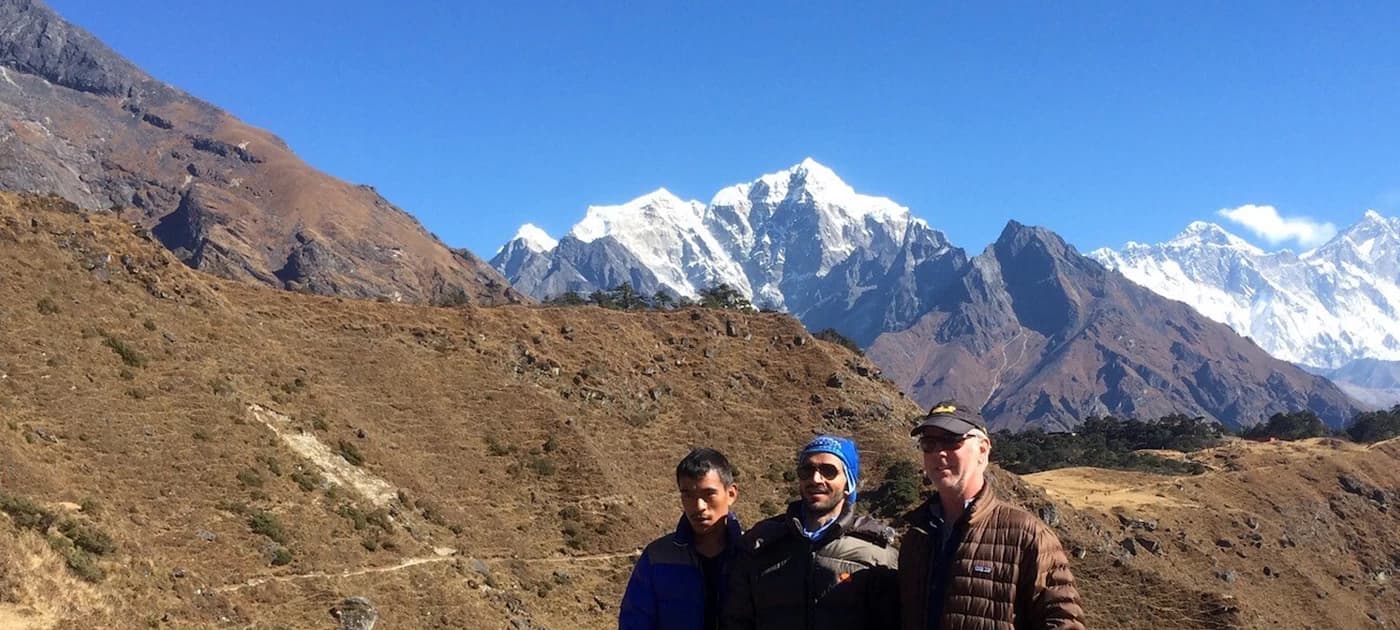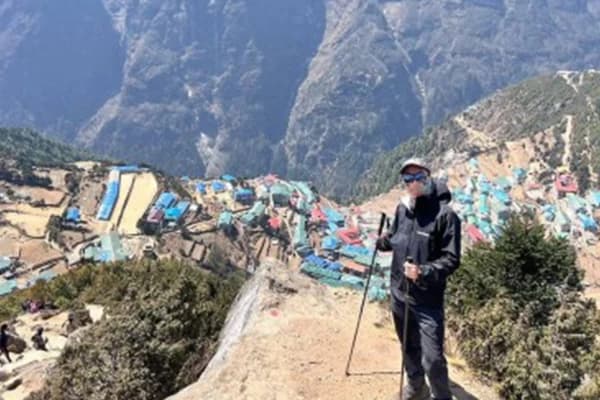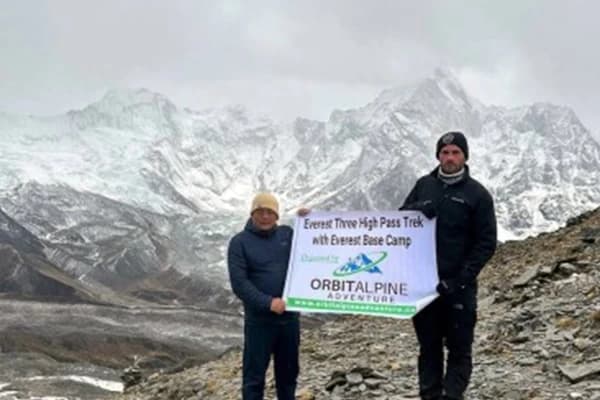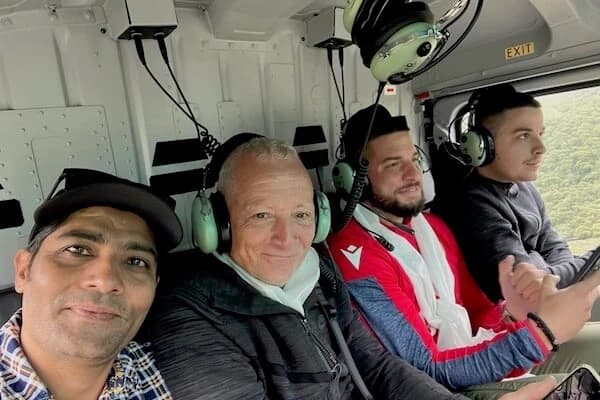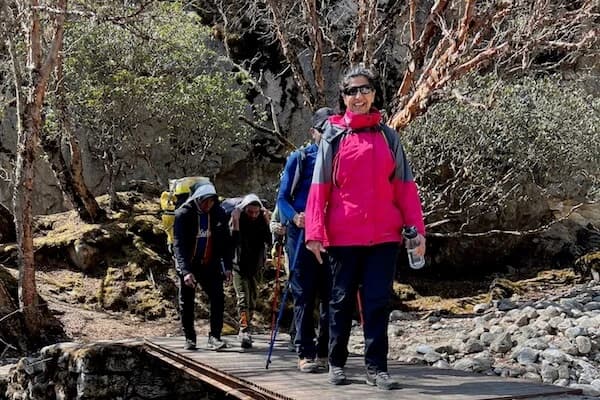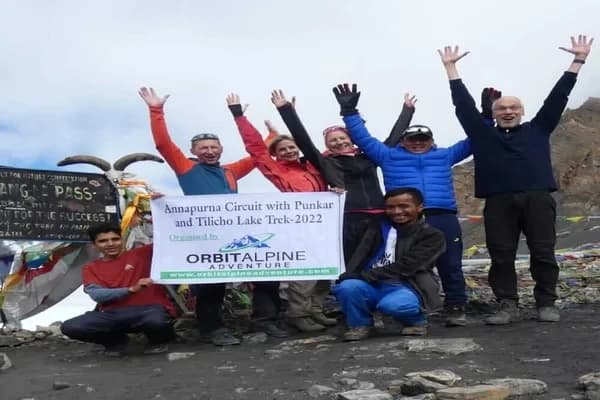This region is also known as the name of the Khumbu region and one of the most iconic trek destinations of untold potentials offering unchallenged views, dynamic trails, and deep cultural experiences. Here are the details of the five best treks in this area and go ahead to give an in-depth explanation of each trek; highlights, difficulty level, duration, best times to visit, and cultural aspects. This is overall a detailed guide that could suit trekkers who are wishing to see the beauty of the Himalayas.
5 Best Treks of Everest Region
Everest Base Camp Trek
The Everest Base Camp trek is famous all over the world as the most called out trekking trip. This encouraging site in the Himalayas offers an adventure to the base of Mount Everest, the highest point on earth, standing at 8,848 meters (29,029 feet). En route, get ready for breathing landscapes, lively Sherpa culture, and an extraordinary sense of accomplishment.
Overview
This trek starts with an exciting flight from Kathmandu to Lukla, a small town positioned at a height of 2,860 meters or 9,383 feet. The real journey starts from here as explorers walk into the Khumbu Valley. Normally, it requires 12 to 14 days on the trek, liable on trekking itineraries and an adaptation schedule. The trail winds through attractive villages, dense forests of rhododendron and pine, and rocky terrain, with the high peaks of the Himalayas providing a continuous environment.

Key Highlights
1. Namche Bazaar: Commonly regarded as the gateway to Everest, Namche Bazaar is the largest Sherpa town in the region. It is always the first vital acclimatization stop for most trekkers who spend an extra day here getting their bodies used to the altitude. This town has been able to mix traditional Sherpas with modern settings, as it has plentiful bakeries, shops, and even a Wi-Fi service.
2. Tengboche Monastery: It is the largest and most significant Buddhist monastery in the region and offers spiritual relief. From this place, one can have a glorious all-around view of Ama Dablam, Everest, and several other mountains. Visiting this place makes one feel unconditionally peaceful, and the sound of prayer flags flapping in the wind adds to the peacefulness of this beautiful, calm residence.
3. Everest Base Camp: It is a significant place because everyone around the world who is going to try climbing the highest mountain starts from this precise spot. The ultimate destination is at a height of 5,364 m (17,598 ft).
4. Kala Patthar: Hike up Kala Patthar, a rocky viewpoint, 5,545 meters (18,192 feet) tall, for the superb view of Mount Ever. This is an energetic experience; though, the wide view of Everest, Nuptse, Lhotse, and the Khumbu Icefall during sunrise will be memorable.
Cultural Experience
All along the trek, trekkers get drawn toward the rich Sherpa culture. The Sherpa people, known for warm hospitality and great mountaineering skills, seem to get along with the hard environment of the Himalayas. Trekkers visit ancient monasteries, observe traditional customs, and come in close contact with the locals, who help them get a feeling for village life.
Challenges
The EBC trek is moderate in grading, but the real challenge is the high altitude. For the avoidance of altitude sickness, one has to be acclimatized correctly. A person has to be well physically fit and mentally prepared to accept long days of walking with steep and rough terrain. So, many trekkers choose Everest Base Camp Trek return by Helicopter to overcome the challenges like knee problems, altitute sickness, and other health risks.
Gokyo Lakes and Gokyo Ri Trek
This trek offers a great trip into one of the most picturesque and non-crowded areas of the Everest region. This journey gives an excellent alternative to the classical trek to the base camp of Mount Everest, with the all-around views of the Himalayas combined with the peaceful beauty of the Gokyo Lakes. Trek also includes the ascent to the top of Gokyo Ri, which stands as the best all-around view that one can achieve in the whole Everest region.

Overview
The Gokyo Lakes and Gokyo Ri Trek normally lasts from 12-14 days and begins with a flight out of Kathmandu toward Lukla. It flows from Lukla through the valley of Dudh Koshi River twisting through Sherpa villages, rhododendron and magnolia forests, giant fir tree forests, and fertile attached fields. There are many gradual ascents along portions of the trek, and the body will have plenty of time to acclimatize to the challenging altitude as you approach the famous lakes of the Gokyo Valley.
Key highlights
1. Gokyo Lakes: The Gokyo set of lakes is a series of six glacier-fed lakes situated at an altitude of 4,700–5,000 m (15,400–16,400 ft). The lakes are holy to Hindus and Buddhists alike because their original, greenish-blue waters contrast in contradiction of the white snow-capped peaks that rise and surround looking dreamlike and calm. Specially, with the first morning sunlight, when the reflection of the nearby mountains radiates on the still waters, it is excellent.
2. Gokyo Ri: Being the most projecting point of view during the trek. This is a rough climb leading to its top, but the reward will be awe-inspiring with a 360° view of some of the highest mountains in the world, most prominent are Mount Everest, Lhotse, Makalu, and Cho Oyu. One gets a special view of Ngozumpa Glacier, which is the longest glacier in the Himalayas.
3. Ngozumpa Glacier: At 36 kilometers long, 3 this colossal glacier is a visual highlight of the Gokyo Valley. The route forges its way across the glacier, really bringing man so close to this ancient river of ice. The rough terrain of the glacier is in sharp contrast with the smooth, turquoise-colored waters of the Gokyo Lakes, adding to the visual appeal of the area.
4. Renjo La Pass: For those in search of an even greater challenge, the trek can be long to include the crossing of Renjo La Pass at 5,360 meters (17,585 feet). This high pass connects Gokyo to Thame by offering incredible scenery of the Everest massif and the Rolwaling range. The descent from the pass into Thame takes you along a comparatively less toured route toward Namche Bazaar.
Cultural Experience
The treks in Gokyo Lakes and Gokyo Ri are like other treks in the Everest region—they provide a good dose of cultural immersion based on the ethnic group's way of life, especially among Sherpas. The trail goes across some Sherpa traditional villages, such as Namche Bazaar, Khumjung, and Machhermo. When you're trekking, you have a chance to mix with the local people—visit the monastery and learn about the Sherpa, whose life has a great deal to do with Buddhism.
Namche Bazaar is the regional trading area of the Sherpa people and the largest town within this region and is highly known for its wonderful market. One day is usually spent in this small town to make trekkers adapt. The place has several facilities including shops, a bakery, and an informative Sherpa museum. Another smaller village that will be an exciting place to visit is Machhermo; a place highly looked upon in one of the famous Sherpa's tales, the Yeti.
This trek is graded as moderately difficult. You should have a good level of physical conditioning and some experience of trekking. The key issue is the altitude, and Gokyo Ri stands more than 5,300 meters. Most people trekking will cross this peak for acclimatization purposes when heading over to Everest Base Camp via the Cho La Pass. There are steep ascents, rocky trails, and some exposed areas crossing the Renjo La Pass. However, it can be trekked by anyone who is well-prepared to take ample time to acclimatize.
Best Time to Trek
The best times for Gokyo Lakes treks are pre-monsoon (March to May) and post-monsoon (September to November). At these times, the weather becomes more stable, and skies are usually clear hence the best time for the views of mountains and the lakes. Autumn is distinguished here for its fresh and vivid color scheme, which makes it a perfect time for photographers by talent and for those who simply prefer life surrounded by wildlife.
Everest Three High Passes Trek
Everest Three High Passes Trek gives an ultimate adventure to the trekkers visiting the Everest region. It is a challenging and complete exploration of the exquisite Khumbu Valley. This trek is so popular since the three passes run high into the mountainous frame of the area, giving unbelievable views of the Himalayas and a deeply surrounding Sherpa cultural experience. This region is famous as one of the hardest trekking routes, yet the highest rewards are given to the trekkers with incredible vistas and a sense of great achievement.

Overview
This trek can be done in 18-21 days, depending on the itinerary and acclimatization schedule. Starting with a flight from Kathmandu to Lukla and thereafter follows the Dudh Koshi Valley toward Namche Bazaar, a busy Sherpa hub of the Khumbu region. From Namche, the trail itself by-passes from the classic Everest Base Camp route into hidden valleys, over challenging passes, and to many other off-the-beaten-path places in the Everest region.
Key highlights:
1. Kongma La Pass (5,535 meters / 18,159 feet): From the top, there are remarkable all-around views of the high peaks of Lhotse, Nuptse, Makalu, and the way in the distance, Cho Oyu. The approach up to this point is both steep and tiring, but an exciting view awaits once the top is reached. The course then gently slides down through the Khumbu Valley, finally leading to Everest Base Camp.
2. Cho La Pass (5,420 meters / 17,782 feet): This pass combines the Gokyo Valley with the trail to Everest Base Camp. It's a pretty steep pass; the top requires a glacier pass through, making things even more adventurous here. At the top of Cho-La, close-up views of Ama Dablam and the peaks around it are dramatically breathtaking. The descent to Gokyo Valley will be a different situation because the greenish-blue Gokyo Lakes will provide outstanding contrast to this very rough land of elevations.
3. Renjo La Pass (5,360 meters / 17,585 feet): Crossing the Renjo La Pass provides one of the truly great all-around views in the world. From the summit of Renjo La, one can see Everest, Lhotse, Makalu, and the massive expanse of the Gokyo Lakes far below. After crossing Renjo La, one descends through this remote region into Bhote Kosi Valley and then finally gets back to Namche Bazaar.
4. Everest Base Camp and Kala Patthar: Though not a pass, Everest Base Camp and Kala Patthar top this trek. Hitting EBC is always considered a phenomenal achievement. Kala Patthar, 5,545 m (18,192 ft), offers the best close-up viewpoint of Mount Everest. Witnessing the sunrise from Kala Patthar — as Everest gets radiant in the display of golden light — is always an experience of a lifetime.
Cultural Experience
The Three Passes Trek offers an immersion into Sherpa culture and Buddhist traditions present throughout the Khumbu region. Trekkers shall walk through the traditional Sherpa villages of Namche Bazaar, Thame, and Dingboche, with opportunities to visit monasteries, and monastic festivals, and take part in interaction with the local community. The trek also revealed the spiritual importance of the mountains, not only to the Sherpas but also through seeing beautifully decorated walls, chortens (stupas), and prayer flags scattered over the scenery.
For example, Namche Bazaar is a cultural hub where trekkers can take the time to acclimatize and visit the local markets, cafés, and the Sherpa Museum. The off-the-beat-path village of Thame is home to one of the oldest monasteries in the area, thereby offering a distinctive aspect in trekking that includes the spiritual dimension.
The Three Passes Trek is a trip that is extremely physically strenuous and requires a lot of effort. This journey demands much patience, a solid body, and mental endurance. The main challenges on the three passes trek include:
Altitude: About the three passes climb over more than 5,000, and there is cause for worry due to the chances of getting altitude sickness; proper acclimatization and maintaining a gradual pace are required to lessen the chances.
Terrain: The trek encompasses steep ascents, descents, and glacier crossings, which can be physiologically very demanding, and one has to step carefully. The passes can be icy, especially on early-morning crossings.
Weather: The weather in the higher Himalayas is changeable at any time, with the temperatures taking a huge dip at night. The trekker has to be prepared for cold conditions and has to prepare to face the snow on the passes.
Best Time to Trek
The best seasons for the Three Passes Trek are the pre-monsoon, or March to May, and the post-monsoon, or September to November. These are periods of stable weather and clear skies, promising the best mountain views possible. Autumn is especially famous because of its crispy air and vibrant sceneries.
Everest View Trek
The Everest View Trek is an ideal alternative for the person who does not want to take on the hard challenges of walking up to the Everest Base Camp but dreaming of enjoying the magnificence of the Everest region. It is easy, yet superb: a beginner trek, perfect for family trekkers and for those short of time. Witness a lot more of the natural spectacles of Mount Everest and the other surrounding peaks in a new dimension of richness in cultural belonging at the heart of the Khumbu Valley.

Overviews
The Everest View Trek normally lasts for 7-10 days. However, this trip is usually started by the magnificent flight from Kathmandu to Lukla. The formal beginning of this trek is Lukla. Then, a classic route along the Dudh Koshi River is passed by many beautiful Sherpa villages full of large prayer wheels and flag-stoned streets. Also, the track continuously moves uphill through the blue pine and rhododendron forest. From Phakding, the trail then gently rises to Tengboche at 3,867 meters, the highest point of this trek. Since the place is much lower than most places in the Everest region, the Everest View Trek can be pursued by many, many more trekkers.
Key Features
1. The trek commences with a gentle drop from Lukla to Phakding, a small, scenically beautiful village lying at an altitude of 2,652 m on the bank of the Dudh Koshi River. The first part of the trek proceeds via an easy walk, hence allowing trekkers to acclimatize to the rising altitude, and at the same time, it allows one to absorb the greenery all around.
2. Namche Bazaar: With great effort, the traveler arrives at Namche Bazaar, the largest Sherpa settlement in all of Khumbu. It rises at 3,440 meters, 11,286 feet above sea level, and is an acclimatization camp. This is the place for a day's halt to get acclimatized to the elevation, and meanwhile, one can study the bustle of the Namche town, the local markets, and the cafes, not to mention the Sherpa Museum.
3. Tengboche Monastery: This monastery, visited as part of the Everest View trip, is the most famous spiritual site. The Tengboche monastery represents a beautiful piece of Tibetan Buddhist architecture within its panoramic surroundings of the world's highest peaks, like Everest, Lhotse, Nuptse, Ama Dablam, and Thamserku. This is not only due to its setting but also due to the famous monastery at Tengboche; many people time their entrance to march in there right in time for the performance of the monks.
4. Everest View Hotel: This is the last significant location point of the trek: the Everest View Hotel, above Namche Bazaar, is 3,880 meters high. It has a lot of celebrity all-around viewing of Mt. Everest and other neighboring peaks, as the name suggests. Many trekkers pause at this place for a cup of tea to relax and enjoy the view it offers.
Cultural Experience
In the Everest View Trek, one discovers the land of Sherpas and their Buddhist culture. Moving further along, one will come across main conventional villages like Khumjung and Phortse, from where it will be possible to view daily life and monasteries. This trek has quite a big component of cultural exploration, rather than the scenic view one has, to be courtesy of the warmth and hospitable smiles of the local Sherpas at every point of interaction.
The Everest View is relatively easy compared to other treks in the Everest region. It requires an average level of fitness. The trail has many uphill and downhill rises, especially towards Namche Bazaar. More significantly, the altitude can factor for most novices who have never trekked at higher altitudes, and the acclimatization of the body becomes important.
Island Peak Climbing
The ascend to the Island Peak The ascend to the Island Peak, otherwise referred to as Imja Tse, is one of the most popular trekking peaks in Nepal for trekkers who wish to extend their Everest region trek with a serious mountaineering experience. At 6,189 meters, it very rarely fails to light up the fires of high-altitude climbing enthusiasm, more so when we consider that the mountain requires no extraordinarily advanced technical skills. Since the trek takes place along the Everest Base Camp, this turns out to be an unforgettable adventure along the most iconic trek in the world.

Overview
Island Peak is situated in the Imja Valley, close to the village of Dingboche. As the story goes, the peak takes its appropriate name when located in the village of Dingboche, an island in a sea of ice. Ordinarily, the ascent takes about 3-4 days; depending on the acclimatization plan and weather conditions. This makes Island Peak accessible on the same route as the classic route to Everest Base Camp, meaning that the two could easily be combined for those already set on trekking in the Khumbu Region.
1. Everest Base Camp and Kala Patthar: A mass of climbers advance to Everest Base Camp and climb Kala Patthar before heading off to Scale Island Peak. This region is without a doubt the best acclimatization region to be in. From the summit of Kala Patthar [5,545 meters (18,192 feet)], we get tremendous views of Mt. Everest together with Lhotse and Nuptse.
2. Island Peak Base Camp: The climb to Island Peak starts from the Base camp located at an elevation of about 5,087 meters, or 16,690 feet, in an amazing valley surrounded by towering peaks. This is the temporary home from the valley floor for the climber; geared up to make the summit push by covering the technical climb, checking all gear and schedule in order.
3. Summit Push: One very long, hard day. Usually, it starts very early to take advantage of climbable weather. Chain links to aid climbing, falls to climb, and rises on the rocky trail of the few who dare the ascent are followed by crossing a small, craggy glacier with a front-pointed crampon and handline. With no fear, a moment later, there is the hard, adrenaline-filled climb up the face at a 45-degree angle of ice and snow, using the fixed rope for protection. When a person has just dragged himself to the top, the views are simply breathtaking: Lhotse, Makalu, Baruntse, Ama Dablam, and just there in the far, just towering in the distance, Everest. Breathtaking.
4. Technical Difficulties: Although it is graded only as a trekking peak, Island Peak is still technically challenging. Climbers would have had to have prior experience and be familiar with using basic mountaineering equipment such as crampons, ice axes, and harnesses. Climbers are, furthermore, supposed to be familiar with some climbing and rope-down techniques. On the other hand, this can prove to be a beautiful trek route for trekkers who are in good physical preparation, complemented with tastes of adventure and without a healthy technical background.
Culturally rich valleys can be witnessed on the way to Island Peak, such as the traditional Sherpa villages of Namche Bazaar, Tengboche, and Dingboche, which provide much insight into the local culture, monasteries, and the toughness of the Sherpas related to mountaineering.
For example, Tendboche Monastery is a religious highlight, and it is just the perfect resting point whereby it may lead one to some thought and an insight into the practices of the Buddhists which go a long way to shape the life of the Sherpas.
Disadvantages of Island Peak
- Islands Peak is a great place, the challenge, however, is something very serious:
- Altitude: Setting above 6,000 meters; it poses the single most visible and prevalent challenge. Proper and adequate acclimatization has to be part and parcel of this tour to avoid altitude sickness.
- Very Technical: While the climb is not super technical, mountaineering equipment and basic knowledge of glacier travel and fixed-rope climbing are called for.
- Stamina: Hard climbing along the way to the mountain top; it might be very cold and windy and steep climbing up as well as down a long steep to Base Camp.
Conclusion
Before coming to Nepal for Trekking, do research on Must do treks in Nepal. One of the best region for trekking you'll find is Everest region.The Everest region has been the most interesting destination for the varieties of hikes, from the most awaited EBC trek to the thrilling Three Passes and an adventure climb to the Island Peak. There is no trek without a challenge: some are easily accessible, others difficult; some are meant for the experienced trekker, and others okay for the novice. In the Everest area, there is something in store for any kind of hiker, be it an adrenaline addict thirsty for the ultimate challenge or somebody wanting less excitement and hence just a laid-back trek.
Know the cultural sensitivity you are referring to, keep yourself well prepared for the altitude, and finally, trek through a sensitive environment. All these hold the key to making the best of your trek across this stunning part of the world. So, whether it would be from a closer look at Everest itself to a gentle meander around the quieter beauty of the Gokyo Lakes, the Everest region promises to the keen trekker a trek across a scenery of distances.
Frequently Asked Questions
1. What might be the best time of the year to trek to the Everest region?
The best time to carry out the trek to the Everest region is the pre-monsoon period. The temperature in these months is very stable, with clear views of the mountain possible.
2. Do we need a permit to trek to the Everest region?
Yes, the main two permits trekkers need are the Sagarmatha National Park Permit and the Khumbu Pasang Lhamu Rural Municipality Permit. Both can be obtained in Kathmandu or during entry into the national park.
3. How energetic are the treks in the Everest region?
Overall treks of record can be said to be somewhere between easy to moderate levels at best. The treks to Everest Base Camp and those to Gokyo Lakes fall under the category of medium or moderately difficult treks. Going above that, the difficulty level ranges from hard to demanding treks in the case of going for Three Passes Treks and Island Peak.
4. How do I acclimatize to the altitude?
Acclimatization has to be done to avoid mountain sickness. To do this, the usual practice is to overnight in certain villages like Namche Bazaar, to approach the climbing bits and to ensure good hydration. Rest days generally feature as part of all itineraries where acclimatization has to be done.
5. What is the accommodation like on the treks?
Accommodation in the Everest region ranges from basic teahouses to fairly more relaxed lodges. Most teahouses have simple rooms with common toilet facilities and serve meals in a common dining hall. The more established towns like Namche Bazaar have more extensive provisioning.
6. How Much luggage can I take on a trek?
Key Equipment: Warm sleeping bag, warm clothes, windproof jacket, trekking boots, day pack, and altitude medicines. Some personal equipment that is good to have handy are trekking poles, a water purification system, and snacks.
7. Can I trek alone, or do I need to have a guide with me?
While it is possible, it is not recommended to plan the trek alone, at the very least not for beginners and even for those who will take harder treks, such as the Three Passes Trek, for the first time. Following consideration of local geography and representation, going along with a hired guide is an absolute requirement for handling emergencies. To make sure there is a porter to carry heavy loads for the trekkers, many reputable companies deal with all emergencies.
